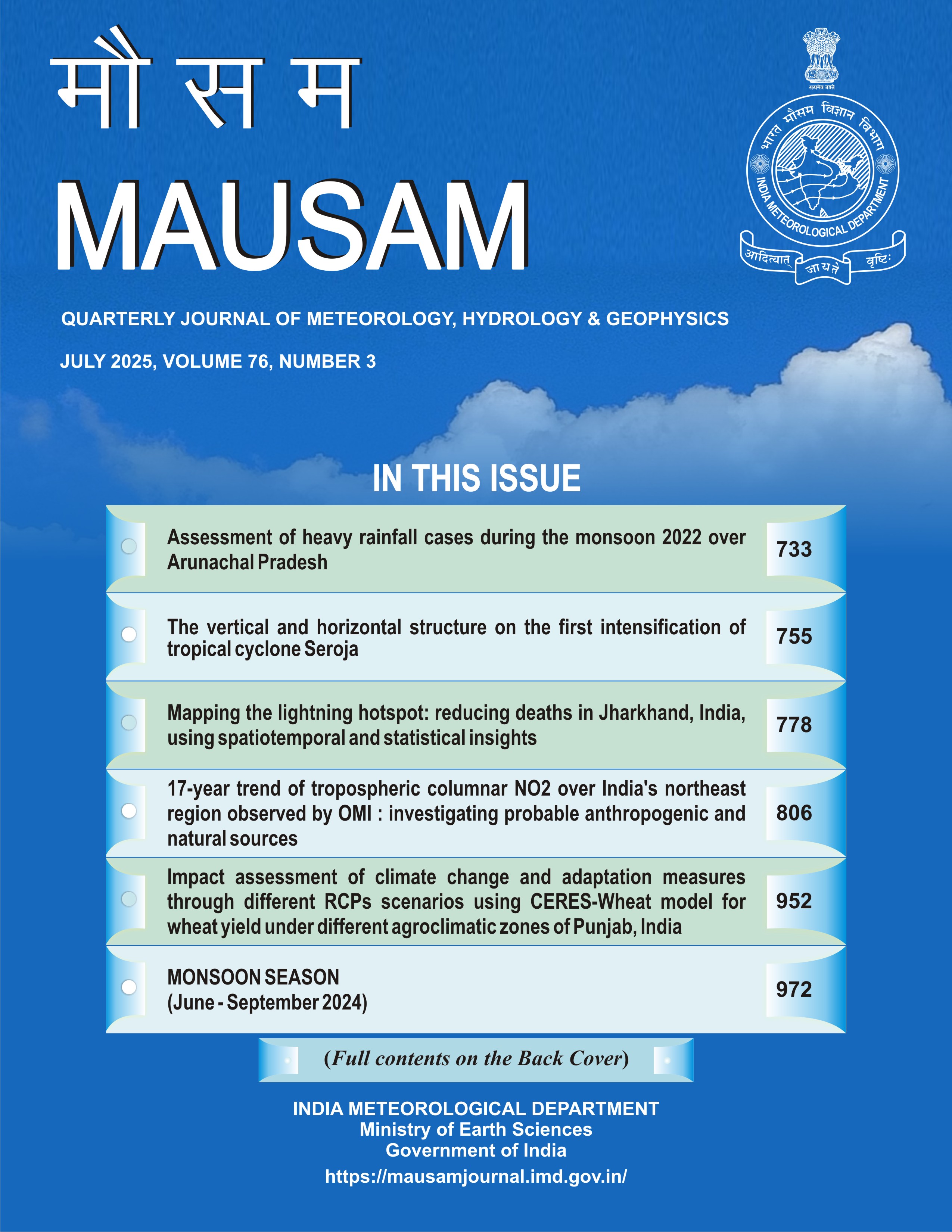The vertical and horizontal structure on the first intensification of tropical cyclone Seroja
DOI:
https://doi.org/10.54302/mausam.v76i3.6380Keywords:
Tropical Cyclone Seroja, Vertical structure, Horizontal structureAbstract
Since Indonesia lies in the equatorial region, tropical cyclones (TC) are quite rare. The cyclogenesis phase which is prior to the TC stage usually takes place in the low latitude region like Indonesia, where the sea surface temperature is quite high and hence favourable to induce low-pressure areas, apparently giving a meaningful impact as well as during the TC stage. However, some tropical cyclones ever occurred very close to the Indonesia region such as TC Vamei in 2001-2002 and TC Cempaka in 2017. The most recent tropical cyclone in Indonesia, namely TC Seroja, occurred very close to Indonesia and hit Nusa Tenggara Timur in 2021. For Seroja itself, the system tends to be unique because it started from a cyclogenesis stage near the equator line and dissipated far in western Australia which survived more than one week before landfall. The first intensification that was categorized into a TC was just a short moment, which then dissipated and intensified again reaching its strongest intensity over the Indian Ocean. TC Seroja was evaluated in this paper to understand the system characteristics, environmental condition, and structure, especially for TC that took place in the near tropical area. The vertical structure is evaluated as well as the horizontal structure to understand the characteristics of the system. This paper revealed that the TC Seroja, with a typical cyclogenesis phase when it struck Indonesia, had the most tremendous impact caused especially by precipitation. The strong environment wind shear is one of the factors that makes TC Seroja unique vertically and horizontally. By this paper, the information during the TC stage in the tropics is expected to be achieved, thus, not only the TC characteristics and structures during the mature or strongest intensity are acknowledged, but also the first TC intensification stage, especially in the tropical region.
Downloads
Published
How to Cite
Issue
Section
License
Copyright (c) 2025 MAUSAM

This work is licensed under a Creative Commons Attribution-NonCommercial 4.0 International License.
All articles published by MAUSAM are licensed under the Creative Commons Attribution 4.0 International License. This permits anyone.
Anyone is free:
- To Share - to copy, distribute and transmit the work
- To Remix - to adapt the work.
Under the following conditions:
- Share - copy and redistribute the material in any medium or format
- Adapt - remix, transform, and build upon the material for any purpose, even
commercially.



